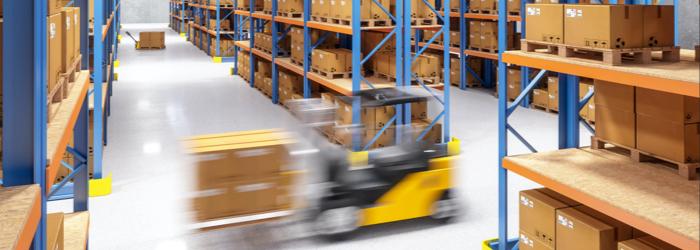Types of Forklifts and Their Applications
on Wednesday, December 18, 2024 at 15:00

Forklifts are essential material handling equipment for many industries, including logistics, construction, and manufacturing. They simplify order preparation, load transport, and moving heavy goods. This article explores a wide range of forklift models, their features, and specific applications. Whether you need an all-terrain forklift or a reach truck, this guide will help you choose the right model for your needs.
Types of Forklifts and Their Applications
Forklifts are essential material handling equipment for many industries, including logistics, construction, and manufacturing. They simplify order preparation, load transport, and moving heavy goods. This article explores a wide range of forklift models, their features, and specific applications. Whether you need an all-terrain forklift or a reach truck, this guide will help you choose the right model for your needs.
1. Counterbalance Forklifts: Versatility and Stability
Counterbalance forklifts, often referred to as forklift trucks, are among the most commonly used models. Equipped with a counterweight at the rear to balance loads, these forklifts are designed to handle various loads both indoors and outdoors.
Applications:
Perfect for order preparation, load transport in warehouses, and truck loading/unloading.
Advantages:
Versatility, stability, and ease of use. They efficiently move loads and meet diverse handling needs.
Tips for Use:
Use them in spaces with smooth maneuvering and where versatile operations are required.

2. Reach Trucks: Efficiency in Narrow Aisles
Reach trucks are designed to maximize vertical storage space in warehouses. With their retractable mast, they operate efficiently in narrow aisles while maintaining high load capacities.
Applications:
Ideal for order picking and high-density warehouses with limited space. They handle loads at significant heights.
Advantages:
Excellent maneuverability and high lifting capacity. Their ergonomic design enhances operator productivity.
Practical Example:
An electronics storage warehouse can use reach trucks to access high shelves while optimizing storage space.
3. All-Terrain Forklifts: Durability and Outdoor Performance
All-terrain forklifts, classified as Class VII forklifts, are built to withstand tough environments. Equipped with rugged tires and powerful engines, these forklifts ensure excellent stability on uneven terrain and are commonly used on construction sites.
Applications:
Used outdoors, they are perfect for construction sites, heavy industries, and rough terrains. They handle heavy and bulky loads.
Advantages:
Durability, high load capacity, and long lifespan. These forklifts ensure safe load transport even on challenging terrains.
Tips:
For intensive outdoor work, choose a model with an enclosed cabin to protect the operator from weather conditions.
4. Telehandlers: Extended Reach
Telehandlers, also known as telescopic forklifts, stand out with their extendable boom, allowing them to lift and move loads at difficult-to-access heights and distances. They combine the functions of a forklift and a crane.
Applications:
Used for agriculture, high-level material handling, and tasks requiring extended reach, particularly in industrial and construction settings.
Advantages:
Great reach and flexibility. Telehandlers are essential for complex handling tasks requiring versatility.
Practical Example:
A farmer might use a telehandler to stack hay bales and move agricultural equipment.
5. LPG Forklifts: Power and Versatility
Propane forklifts offer a balance between electric and diesel models. While they produce emissions, their quick refueling time and ability to operate continuously make them practical for both indoor and outdoor applications.
Applications:
Commonly used in warehouses and distribution centers. They are suitable for order picking and load transport in mixed environments.
Advantages:
High lifting power, extended autonomy, and low operating costs.
Note:
Ensure indoor spaces are well-ventilated when using these forklifts to minimize exposure to emissions.
6. Electric Forklifts: Eco-Friendly Efficiency
Electric forklifts stand out for their clean and quiet operation. Powered by rechargeable batteries, such as lithium-ion batteries, they are ideal for warehouses where emissions and noise must be minimized.
Applications:
Primarily used for order picking and load transport in closed warehouses, high-traffic storage areas, and zones requiring low noise levels.
Advantages:
Zero emissions, low maintenance costs, and quiet operation. They minimize environmental impact and enhance operator comfort.
Tips:
Choose models with sufficient battery autonomy to handle your daily workload and reduce interruptions for recharging.

7. Articulated Forklifts: Maximum Maneuverability
Articulated forklifts are designed to maneuver in tight spaces thanks to their articulated chassis. These models are perfect for maximizing storage space in densified warehouses.
Applications:
Used for handling loads in warehouses with narrow aisles. They are particularly effective in distribution centers where order picking is essential.
Advantages:
Extreme maneuverability and significant lifting capacity at high levels. They help maximize storage capacity while facilitating access to goods.
Practical Example:
A clothing distribution center can use articulated forklifts to optimize space and reduce order handling time.
Choosing the Right Forklift
To select the right type of forklift, consider several key factors:
-
Environment of Use: All-terrain forklifts are ideal for construction sites and rough surfaces. Electric forklifts, electric pallet trucks, and reach trucks are better suited for indoor environments.
-
Load Capacity: Consider the weight of the loads you handle. Telehandlers and all-terrain forklifts have high load capacities, while counterbalance forklifts and electric pallet trucks are suitable for medium loads.
-
Lifting Height: For accessing high racks, choose a reach truck or telehandler.
-
Specific Needs: If order picking is a priority, opt for electric or articulated forklifts that facilitate load access and transport in tight spaces.
Conclusion
Forklifts play a key role in optimizing logistics and material handling across various industries. Understanding the advantages and specific applications of each model helps choose the right equipment and improve operational efficiency. Whether you need electric forklifts for a warehouse or all-terrain forklifts for outdoor tasks, this guide will help you make an informed choice.

